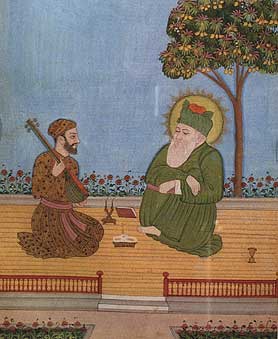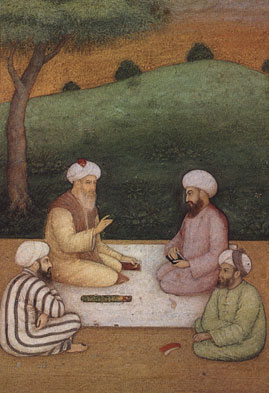
SUFI
One of the class of Muhammadan free-thinkers, mystics or pantheists: one who uses nothing intoxicating. Punjabi Dicty., p. 1072.
The term is generally derived from Arabic word 'Su'f', ' wool,' but it is probably a corruption of the Greek sophos, 'wise.' Any discussion of the Sufi doctrines and practices must be reserved for the introductory volume, but below will be found a list of the Sufi schools, orders and sects, as they may be styled, provided no very precise definitions of those terms is postulated.
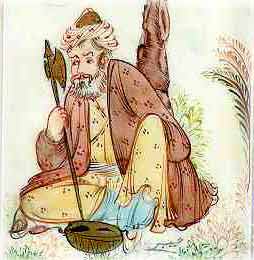
A Sufi Faqir
The Ajmi founded by, or named after, Khwaja Habib Ajmi, the Ayazi from Khwa'ja Fuzail, son of Aya'z, whose shrine is at Kufa, the Adhami, from Khwaja Ibrahim Khan, whose shrine is at Baghdad, the CHISHTI, the HUBAIRI, the KAZRUNI, the Tusi, the SUHRAWARDI, the Firdosi from S. Najam-ud-din Firdos, the Karkhi, the Qadiri, the Siqti, the Naqshbandi and the Zaidi.
Of these orders, the oldest is the Qadria, founded about 1100 A. D. by Abdul Qadir Jilani, the Pir Dastgir (see below) whose shrine is at Baghdad, a descendant of Ali, through the martyr Hassan, according to the genealogies preserved in India, and while it appears certain, on the one hand, that the order is, historically, a Shia development, on the other it is undoubtedly connected with Sufiism, Abdul-Qadir being reverenced by the Sufis.

The Qadria sect has had several branches in India, as, for example, the Muqimia, PAKRAHMANIA and NAUSHAHI. Closely connected with the Qadria is the SUHRAWARDI order. From this order again branched off the JALALIS. Another Sufi order, sometimes described as one of the 32 Shia sects, is tile Naqshbandi or mystics.* Its foundation is sometimes ascribed to Pir Muhammad whose tomb is in the Kasar-u-Urfan at Bokhara and who appears to have flourished in Persia about 1300 A. D., but Khwaja Bahau-ud-Din is more generally regarded as its originator. According to Maclagan the sect was introduced into India by Shaikh Ahmed Sirhindi whose priestly genealogy is traced back to Abu Bakr the first Caliph. Last, but not least, comes the Chistia sect, founded in Khorasan, and revived in the 13th century by Khwaja Farid-ud-Din Shakar-Ganj, in the Punjab, in which province it has fifteen gaddis or shrines.
The Muqimia or Maqim-Shahi are followers of Shah Muqim of Hujra in Montgomery. Its founder was a Qadiri, and he himself conformed to the rules of that order, but some of its present adherents do not follow them.
The Qadiri shrines in the Punjab come next to those of the Chishtis in importance and number. They include such shrines as that of Khwaja Qumais at Sadhora in Ambala. A characteristic story describes how Raim Ram Deo, a Bhatti Rajput of Kapurthala, held the tract round Batala (now in Gurdaspur) in farm under Bahlol Khan Lodi in 1472 A. D. He became a disciple of Shaikh Muhammad Qadiri of Lahore and founded a town, but, as the site first chosen was considered inauspicious, it was changed, at the astrologers' advice, to the present site of Batala, which derives its name from the exchange-batta or vatta..
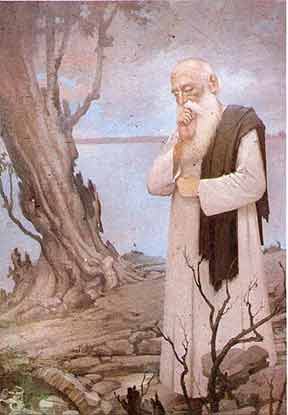
Sheikh Farid Shakarganj

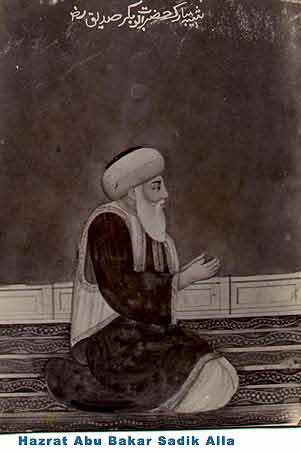
SOME PROMINENT SUFI FAQIRS (pictures obtained -courtesy World Heritage Museum)
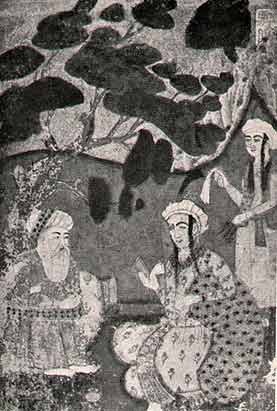
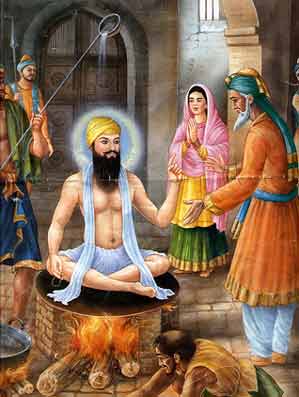
Mian Mir listening to Guru Arjun 'how to live in the Will of the Almighty'
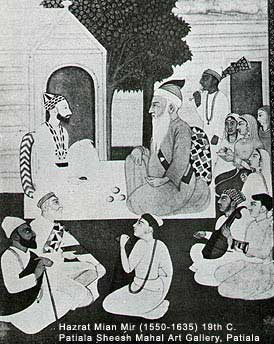
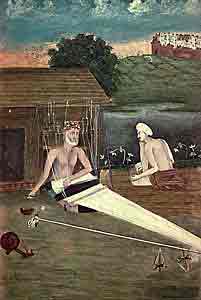
Saint Kabir. It is not sure whether Kabir was a sufi saint or Hindu ascetic.
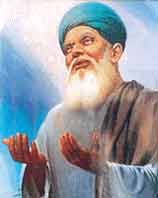
Sheikh Farid Shakarganj
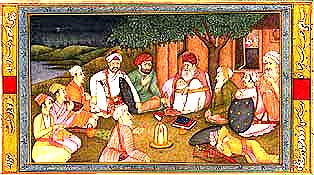
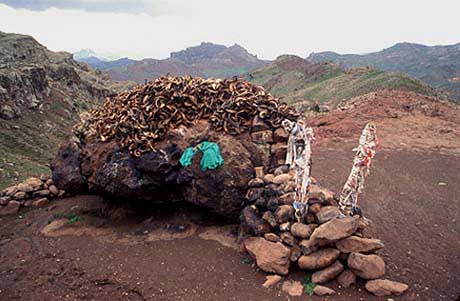
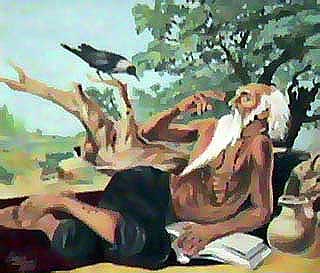
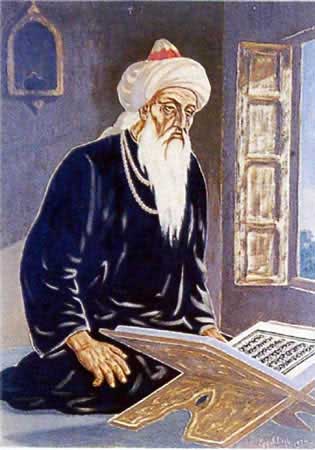
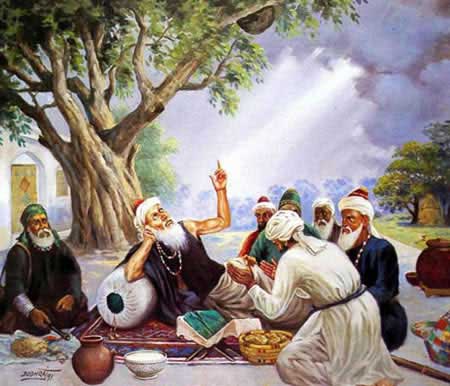

Warris Shah, the writer of the great Punjabi love poetry 'HEER'
